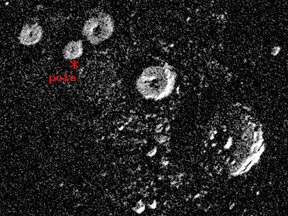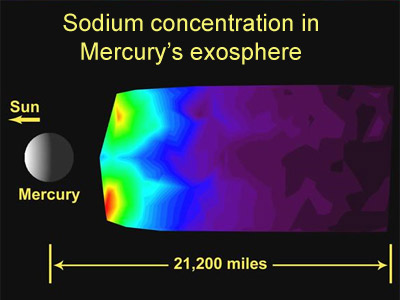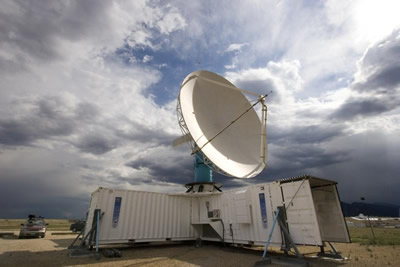Click on image for full size
Image courtesy of NAIC - Arecibo Observatory, a facility of the NSF (J. Harmon, P. Perrilat, and M. Slade).
Mercury's Poles
Some planets are tilted so their North and South Poles are not straight up and down. Earth is tilted a bit - about 23°. Uranus is tilted a lot - more than 90°. Mercury, on the other hand, is hardly tilted at all. Mercury's tilt is less than 1/30th of one degree! That's a lot smaller than Jupiter's tilt, which comes in second place. Jupiter is tilted just a bit more than 3°.
We have seasons on Earth because of our planet's 23° tilt. Most other planets are also tilted. They have seasons, too. Mercury does not have seasons because it isn't tilted. If you were at one of Mercury's poles, you would see a strange sight. The Sun would always be at the horizon, like it was rising or setting. The Sun would look bigger, too, because Mercury is closer to the Sun than Earth is. The big Sun would seem to move around the horizon, going up and down a little... but it would never rise all the way and it would never set all the way.
Mercury has lots of meteor craters. Some of the craters are near Mercury's poles. If you were inside a crater near the pole, you might never see the Sun. The rim of the crater would be like a hill all the way around you. The Sun might never rise over the top of the rim-hill.
Scientists think there might be some craters like that... where the Sun never shines on the bottom of the crater. They even think some of the craters might have ice in them. That seems really strange since Mercury is so near the Sun and so hot. The temperature is sometimes as high as 452° C (845° F) on Mercury. Still, scientists have taken radar images that may show ice in craters near the poles.
Mercury has a magnetic field. Its field is weak. Earth's magnetic field is about 100 times stronger. Earth's magnetic field is tilted, and so is Mercury's. That means the magnetic poles are not in the same place as the geographic poles.












